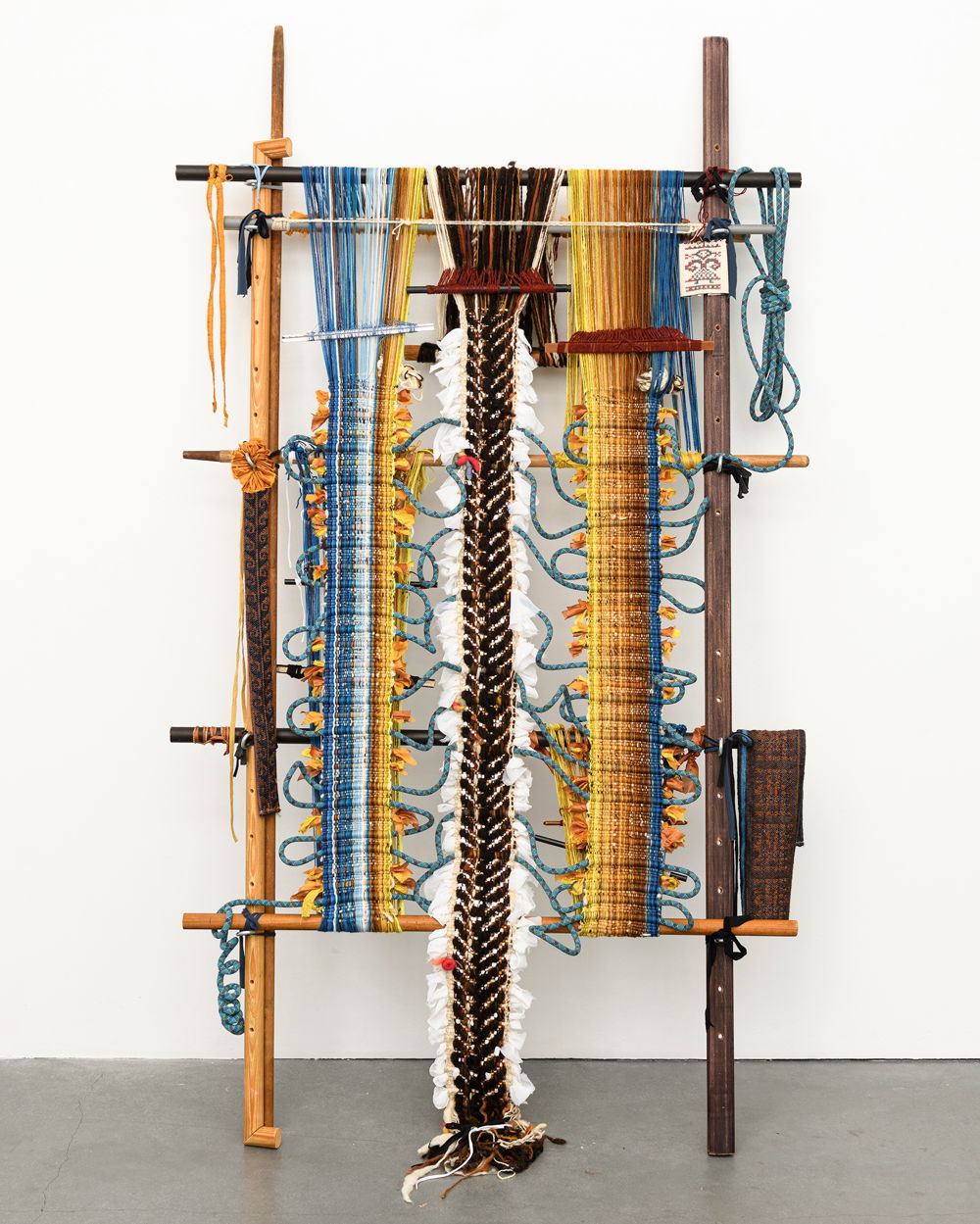Kira Dominguez Hultgren
She // Her // Hers
They // Them // Theirs
Textile Artist
Urbana, Illinois

Photo by Definition Foto.
“In my studio practice, weaving and the loom act as a code-switching device between anachronistic technologies, elusive identities, speculative histories, and illusory desires.”
Kira Dominguez Hultgren is a US-based artist, weaver, and educator. Dominguez Hultgren studied postcolonial theory and literature at Princeton University and studio arts and visual and critical studies at California College of the Arts. Their research interests include material and embodied rhetorics, re-storying material culture, and weaving as a performative critique of the visual. Dominguez Hultgren weaves with the material afterlife of a so-called multiracial family: Chicanx-Indigenous-Indian-Hollywood Hawaiian-Brown-Black. Instead of being passed down, weaving and textile processes are brought up, resurrected from family stories and fabrics. Dominguez Hultgren builds looms to weave into the frayed edges of lost language, culture, traditions, and lives that were deliberately cut off in past generations. Her looms — whether digital jacquard, backstrap, floor, or post — materialize this present absence, often as large-scale checkboxes and X-marks. Questions about appropriation and code switching, exoticism, and performing cultural misrecognitions occupy their practice.
Dominguez Hultgren has exhibited their work broadly, including shows at Lehmann Maupin Gallery, Ballroom Marfa, de Young Museum, the San Jose Museum of Quilt and Textile, and Eleanor Harwood Gallery. Their work has received critical attention in The New York Times and Architectural Digest. Residencies and fellowships include the Basque BioDesign Center in Bilbao, Spain; Gensler; Facebook; and the Headlands Center for the Arts. Dominguez Hultgren is Assistant Professor at the University of Illinois Urbana–Champaign in the School of Art + Design and Center for Latin American and Caribbean Studies.
Donor -This award was generously supported by Good Chaos.
This artist page was last updated on: 08.13.2024

Split from Center by Kira Dominguez Hultgren, 2022. Handspun brown wool, skins, fleeces, straps, fabrics, yarns, silks, loom bars, zip ties, sticks, and other hardware, dimensions variable.
Photo by Daniel Kukla.

In the Silence Between Mother Tongues by Kira Dominguez Hultgren, 2022. Silk salwar and chunni, climbing gym rope, paracord, found wood, plastic, and metal loom bars, heddle and shed rods; eye bolts, handspun and hand-dyed wool, digital-hand woven fabric in cotton, mohair, and metallics, miscellaneous yarns and fabrics, 92 × 55 × 12 inches.
Photo by Shaun Roberts Photography.

Arose by Kira Dominguez Hultgren, 2020. Virgin and less pure wool in homespun marigold and primitive rust; mixed yarn blends from the US, UK, and Canada; Indian cotton; Chinese silk; climbing gym rope from Berkeley Ironworks; found wooden frame bars and stakes; cam straps and D-rings, dimensions variable.
Photo by Shaun Roberts Photography.